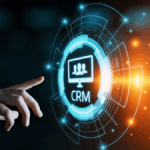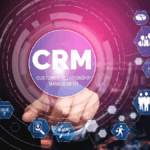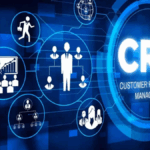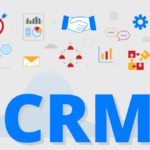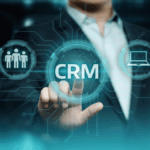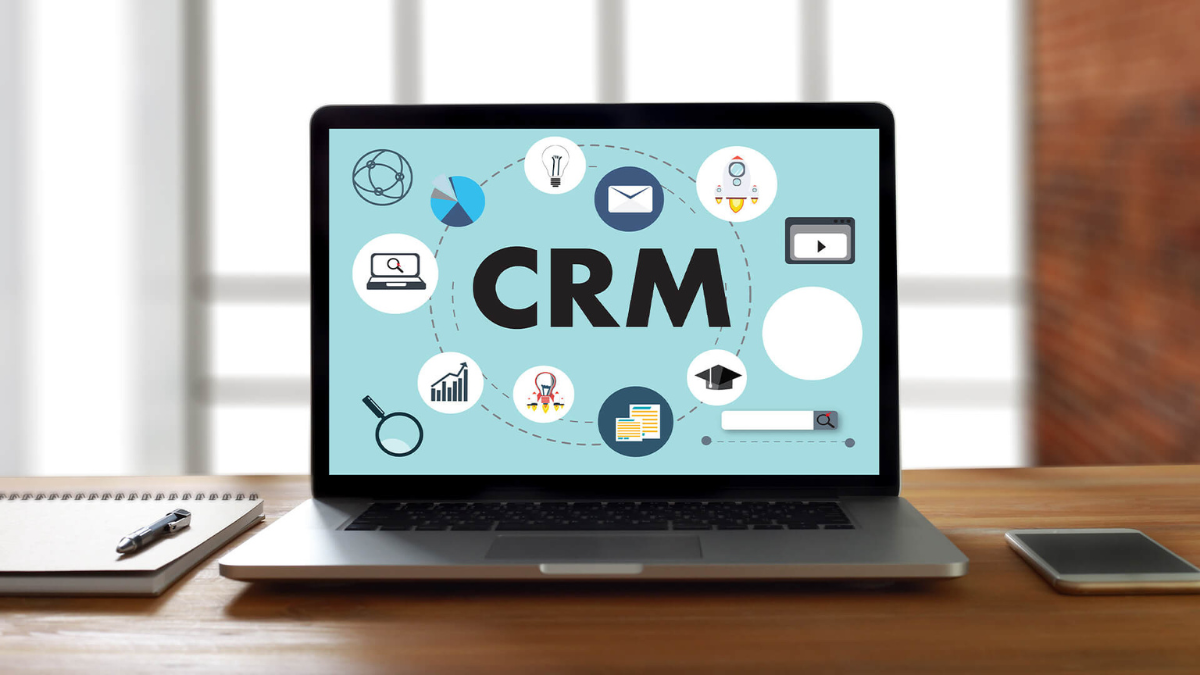Customer expectations in 2025 are higher than ever. They want personalized service, fast responses, and a seamless journey across platforms. To meet these expectations, businesses must invest in the right Customer Relationship Management (CRM) system. But with so many CRM platforms available, how do you know which one is the right fit for your organization?
This guide will help you understand how to evaluate, compare, and ultimately choose the right CRM system for your business needs — whether you’re a solopreneur or an enterprise managing a global customer base.
What Is a CRM System?
Basic Definition
A Customer Relationship Management (CRM) system is software that helps businesses manage interactions with leads, prospects, and customers. It stores contact details, tracks communications, automates processes, and supports sales, marketing, and customer service operations.
Importance in Modern Business
CRMs serve as the central nervous system of any customer-centric organization. They allow you to:
- Track customer data and history
- Automate emails and workflows
- Streamline sales pipelines
- Monitor campaign effectiveness
- Deliver consistent customer service
Why Choosing the Right CRM Matters
Not All CRMs Are Created Equal
Every CRM system is designed with specific users, industries, and functionalities in mind. A mismatch between your needs and your CRM’s capabilities can lead to:
- Low adoption rates
- Wasted time and resources
- Inconsistent customer experiences
- Data management issues
CRM as a Strategic Investment
Choosing the right CRM ensures better efficiency, higher ROI, and improved customer satisfaction. It directly affects your ability to scale and grow.
Step-by-Step Guide to Choosing the Right CRM
Step 1: Understand Your Business Goals
Ask the Right Questions:
- Are you trying to improve sales tracking?
- Do you want to automate marketing?
- Is customer service your priority?
- Are you looking for better analytics?
Understanding your primary objectives will narrow down the CRM features you truly need.
Align CRM Features with Goals
- Sales-driven businesses need pipeline and forecasting tools.
- Marketing-focused teams need campaign automation and segmentation.
- Service-based businesses need ticketing and support workflows.
Step 2: Identify Must-Have Features
Common CRM Features to Consider
- Contact and lead management
- Sales pipeline tracking
- Email and phone integration
- Marketing automation
- Analytics and reporting
- Task and calendar management
- Customer support module
- Mobile access
- Third-party integrations
Advanced Features for Growing Businesses
- AI-powered recommendations
- Chatbots and live chat
- Territory management
- Customizable dashboards
- Workflow automation
Step 3: Evaluate User-Friendliness
Interface and Design Matter
If your team finds the CRM hard to navigate, they won’t use it. Look for:
- Simple, clean dashboards
- Drag-and-drop functionality
- Clear menus and navigation
- Quick-access toolbars
Trial Periods Help
Always opt for a free trial to test the CRM’s usability. Gather feedback from different teams during this phase.
Step 4: Determine Your Budget
Free vs. Paid CRM
- Free CRMs like HubSpot and Zoho offer basic functionality ideal for startups.
- Paid CRMs provide scalability, automation, analytics, and better customer support.
What’s Included in the Price?
Check for:
- Number of users
- Data storage limits
- API access
- Customer support availability
- Customization options
Don’t Forget Hidden Costs
Integration, customization, and training might come at extra cost.
Step 5: Check Integration Capabilities
Why Integration Matters
Your CRM should connect seamlessly with tools you already use:
- Email platforms (Gmail, Outlook)
- Project management (Asana, Trello)
- Marketing tools (Mailchimp, Facebook Ads)
- E-commerce platforms (Shopify, WooCommerce)
- Accounting software (QuickBooks, Xero)
API and Developer Access
For complex systems, ensure the CRM offers API access for custom integrations.
Step 6: Assess Scalability and Customization
Can It Grow With You?
Look for CRM platforms that can:
- Add more users easily
- Handle higher data volumes
- Introduce advanced features as you scale
Customization Capabilities
- Add custom fields
- Modify layouts
- Create personalized workflows
- Adjust user permissions
Step 7: Analyze Reporting and Analytics
Real-Time Dashboards
A good CRM provides up-to-date performance metrics like:
- Sales performance
- Conversion rates
- Campaign ROI
- Customer satisfaction scores
Forecasting and Predictive Tools
Advanced CRMs use AI to:
- Predict customer behavior
- Recommend next best actions
- Forecast future sales revenue
Step 8: Consider Mobile Access and Remote Usability
Mobile CRM Is a Must
Your sales or service team may need access on the go. A mobile-friendly CRM allows:
- Contact updates from the field
- Instant call logging
- Task reminders
- Voice notes and GPS tracking
Cloud-Based Access
Ensure the CRM is cloud-hosted for real-time, multi-location access without IT overhead.
Step 9: Examine Security and Compliance
Data Protection Standards
Your CRM must comply with:
- GDPR
- CCPA
- ISO 27001 (for enterprise security)
Essential Security Features
- Role-based access
- Two-factor authentication
- Data encryption
- Audit logs
Step 10: Compare Customer Support and Community
24/7 Support Is Crucial
Check if the CRM offers:
- Email/chat/phone support
- Onboarding assistance
- Knowledge base and tutorials
- Community forums
Active Communities Help
CRM platforms with strong user communities often offer peer support, plugins, and shared best practices.
Top CRM Platforms to Consider
HubSpot CRM
- Great for beginners and SMBs
- Free tier available
- Seamless marketing integration
Salesforce
- Powerful and customizable
- Ideal for large enterprises
- AI-driven analytics and workflow
Zoho CRM
- Affordable and scalable
- Strong mobile app
- Ideal for remote and hybrid teams
Freshsales
- Built-in phone and email
- Easy to set up
- Suitable for growing businesses
Pipedrive
- Visual sales pipeline
- Automation for repetitive tasks
- Good for sales-driven teams
Mistakes to Avoid When Choosing a CRM
Ignoring Team Input
Make sure your sales, marketing, and service teams are involved in the selection process.
Choosing Features You Don’t Need
Don’t be lured by fancy features. Focus on what you’ll actually use.
Not Planning for the Future
Select a CRM that can scale with your growth, not just fit your current needs.
Skipping Training
Invest in onboarding and training. A CRM is only as effective as the people using it.
Forgetting About Data Migration
Make sure there’s a clear plan for importing contacts, leads, and historical data from your old systems.
Conclusion
Choosing the right CRM is a strategic decision that impacts your entire organization — from how you engage leads to how you retain long-term customers. The ideal CRM should align with your business goals, fit your budget, integrate with existing tools, and be easy for your team to adopt.
By following this structured approach — from goal setting to feature evaluation, from usability testing to future scalability — you can select a CRM system that not only supports your current operations but also fuels long-term growth. Remember, the best CRM is the one that your team will use, your customers will benefit from, and your business will grow with.
FAQs
1. How do I know if my business needs a CRM?
If you’re tracking leads manually, losing track of customer conversations, or managing large volumes of contacts, it’s time for a CRM.
2. Can I switch CRM systems later?
Yes, but it’s time-consuming and may involve data migration challenges. It’s better to choose a scalable CRM from the start.
3. Are free CRMs reliable?
Yes, tools like HubSpot and Zoho offer free tiers that are robust enough for startups and small teams, though they may lack advanced features.
4. How long does CRM implementation take?
It depends on complexity. Small businesses may be up and running in a few days; enterprises could take weeks or months.
5. Do I need technical skills to use a CRM?
No. Most modern CRMs are user-friendly with drag-and-drop interfaces. However, advanced customizations may require IT support or consultants.

